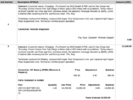geordi
Mr Fusion V.1
The battery for the classic S and X is not 20k. It would depend on which size you had originally, but the cost for a reman unit from Tesla is more like 11k-14k and the cost for new is like 13k-15k. Now if you choose the reman, there is a good chance you will get a new pack anyway b/c the availability of reman packs is quite limited. But that's a gamble and no guarantees.
Or you can go to 057tech and pay a lot less and maybe get an upgrade out of it - but that will be a used pack not a refurb.
Or you can go to 057tech and pay a lot less and maybe get an upgrade out of it - but that will be a used pack not a refurb.



